Sigma Q&A @ CP+ 2017: Global Vision and Sony FE-mount lens plans, and the epic 200-500mm’s connection to… sushi??
posted Thursday, April 6, 2017 at 6:00 AM EDT

Rounding out our interview series from the CP+ 2017 tradeshow in Yokohama, Japan, Imaging Resource founder and publisher Dave Etchells recently met with Sigma CEO Kazuto Yamaki to discuss the company's impressive lens lineup.
Topics covered in our Sigma interview include the challenges the company faced in creating the uniquely bright and wide-angle Sigma 14mm f/1.8 DG HSM Art lens, as well as the reasons why we've yet to see updated Global Vision lenses in certain market segments. Yamaki-san also detailed Sigma's two-pronged strategy for the Sony FE-mount, and gave us some early insight into how the Sigma sd Quattro-series cameras are performing in the market. And as if that wasn't already plenty, we also learned a little of the history behind the spectacular Sigma 200-500mm f/2.8 lens, as well as a tip for sushi lovers which (yes, really) has an interesting connection to that particular optic!
Without any further ado, let's get right down to the interview.
Dave Etchells/Imaging Resource: The new Sigma 14mm f/1.8 DG HSM Art lens feels like an amazing lens, and it certainly stands out as a unique one, being the only ultra-wide angle f/1.8 lens in the world. Can you describe some of the challenges that went into making it? What did you have to solve to be able to accomplish that?
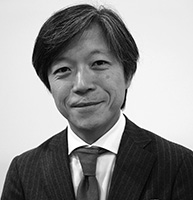
Chief Executive Officer
Sigma Corporation
Kazuto Yamaki/Sigma: When we developed the 12-24mm f/4 DG HSM Art zoom lens, [which] we announced last year, we developed technology to make a large-diameter aspherical lens.
DE: Ohhh!
KY: The [12-24mm f/4] zoom lens used a very large aspherical lens which is over 80mm.
DE: Yeah. An 80mm aspheric, wow!
KY: I think this is the largest aspherical lens which is used in [an] internal-zoom lens, and we [also] used this technology to implement the 14mm f/1.8. In other words, without that glass, we couldn't make this spec [lens] with this performance.
DE: Wow, that's interesting, and so that's something that Sigma developed. I know that there are companies makimg the molding machines, but you developed them to be able to mold larger.
KY: And also we ordered a custom machine to make the large-diameter [aspherical lenses], so we worked together with the machine manufacturer. And also, we already have the 20mm f/1.4 DG HSM Art lens, so we [could use our] experience to make a fast, wide-angle zoom lens, to help us to make a 14mm f/1.8.
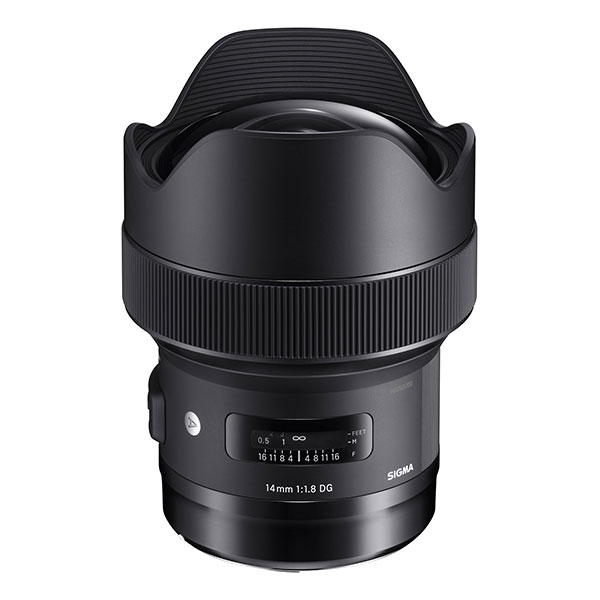
DE: Ah, I see! Just in terms of the design, knowing the structure of the optical formula.
KY: Right, right. Yes. [From a] design point of view, and also [from a] manufacturing point of view.
DE: Ah, yeah, interesting. So your range of lenses continues to grow and grow, and you pretty much seem to have all the bases covered in terms of subject types and usage. One of the lenses that sticks out to us that hasn't received the Global Vision treatment yet is the APO 70-200mm f/2.8 EX DG OS HSM.
KY: <laughs>
DE: It's such a popular lens, it seems that it's an interesting omission. I know you can't comment on future products, but we're assuming that there's going to be a Global Vision version of that at some point?
KY: Yes. Our basic plan is to renew all the existing lenses to the new Global Vision series, so in the future we will renew that lens.
DE: Yeah. So at some point, everything will be renewed, and it's just a matter of the priority.
KY: Yeah. Many people believe it's very late to renew [the 70-200mm f/2.8], so [they] ask me why? But we have every reason, because as a lens manufacturer, our most important mission is to develop unique lenses which camera manufacturers don't have [in their own lineups].
DE: Ah, yeah, yeah.
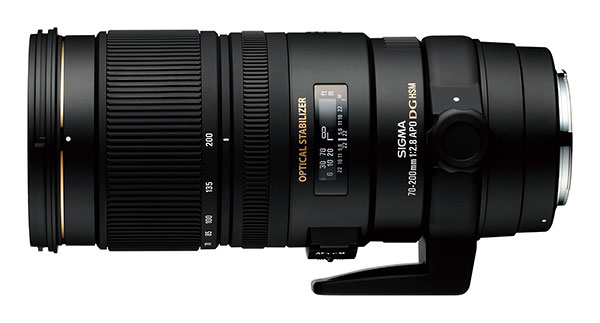
KY: [Our products need] a unique feature, a unique spec, or if the spec is the same, the performance [has to be] much better than the existing one, at the cost of the size and weight.
DE: Yeah, yeah.
KY: We also need to fulfil [this] demand from the customers. So the 70-200mm f/2.8 is a very popular standard lens segment, so that's why this lens cannot be...
DE: There's kind of, there's a tension, it's like people ask you about it, but there are good 70-200s already. But there are no 14mm f/1.8s...
KY: No.
DE: ...so [prioritizing the lens which no manufacturer already offers] makes sense. So it's like eventually, some day you'll renew [the 70-200mm f/2.8], but it's a matter of priority and where you want to put your resources.
KY: Yes.
DE: We're curious about the Sigma sd Quattro: You have the APS-C version shipping, and the APS-H just started shipping in January. What has the customer response been to these new models? And are you seeing new customers getting their first Sigma camera, or is this mostly people upgrading from previous [Sigma cameras]?
KY: Most of the customers are upgrades. <laughs>
DE: Upgrades, yeah.
KY: ...from the existing camera. It's quite challenging for us to have new customers.
DE: One of my editors recently tested the sd Quattro and he noted the obvious characteristics. It's incredibly sharp and detailed at low sensitivity, and completely avoids any kind of color artifacts, but it's also kind of slow, and it doesn't do high ISO. Those are tradeoffs that a lot of photographers are willing to accept for the image quality [at lower sensitivities], but it makes it a little bit of a niche product. Do you ever foresee using sensors from other manufacturers to reach a bigger part of the market? Or does that not really fit strategically at all?
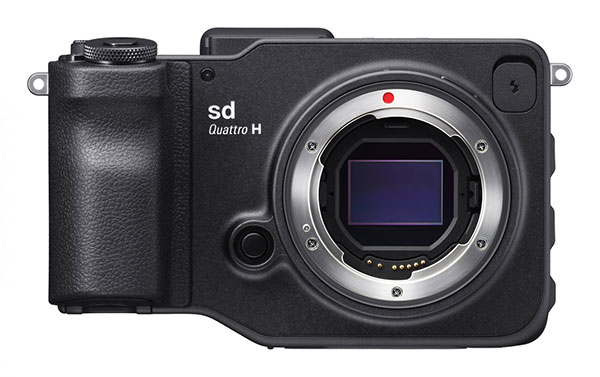
KY: First of all, we don't have such a plan right now. And for us, the most important thing for us is to differentiate our cameras from others. If we used a similar type of sensors as other manufacturer [are using], the customer [would] have no reason to buy a Sigma camera [over one from a rival]. So if we can find some differentiation factor, even [if] we use the conventional sensor, we are happy to use it but so far we can't find it.
DE: Yeah, you don't see something that would be really differentiating like that, yeah. It's kind of the same story as the 70-200mm, in that you want to offer something different [from rivals].
KY: Right, right.
DE: You've released so many really excellent lenses in the last few years. We're wondering if you're seeing photographers from any particular brand switching to Sigma more? Do you see more Nikon or more Canon people switching?
KY: Actually, I don't think they're switching the lens.
DE: Oh! It's just that as they're adding lenses, they're buying Sigma.
KY: Right. First of all, we know our loyal customers. They're some customers who only buy Sigma lenses. It's not many. But we [also] recognize that some very loyal Canon / Nikon users [have started to be] interested in our lens. Those customers were not interested in Sigma lenses at all [previously]. But these days, they're interested in our lenses. So they're our potential customers in the future.
DE: Yeah, yeah.
KY: And I don't think they switch from Canon or Nikon. They will add our lenses [to] their equipment.
DE: So it probably just depends on how many of which brand of cameras are out there. What mounts are selling the most?
KY: Canon, yes, Canon EF [is] far more than...
DE: Far more than others, yeah. It's just, they have so many bodies out there probably, yeah.
KY: Yes, yes.
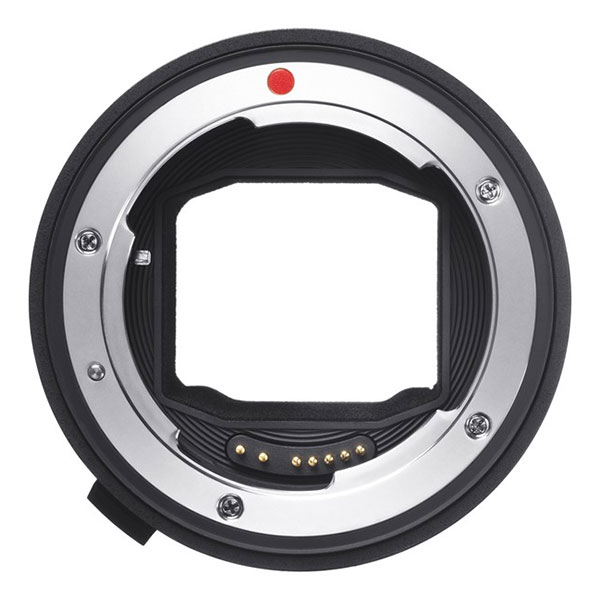
DE: You don't have any full-frame native E-mount lenses available, but you have many lenses including the four that you just announced that are compatible with the MC-11 mount converter. Is that the main strategy that you will continue to take rather than doing native E-mount lenses? And what are the challenges associated with making a lens that you can manufacture for Canon and Nikon, but also make for E-mount?
KY: Moving forward, we will develop more E-mount native lenses.
DE: Ah!
KY: Full-frame lenses for full-frame mirrorless cameras: That's our plan. But we have a different purpose with the MC-11 [adapter]. When we were developing the MC-11, we assumed that some customers use both a Canon DSLR and Sony mirrorless camera.
DE: Ah, yes.
KY: And for them, it's very expensive to invest [in] the lenses for both systems.
DE: Right, right.
KY: They have to buy two 24-70mm f/2.8 [lenses, for example]. It doesn't make sense. So with the MC-11, if they buy our new 24-70mm f/2.8, they can use [it] for Nikon bodies, Canon bodies and Sony [bodies]. That's our intention with the MC-11.
DE: And the MC-11, though, it will not adapt a Canon-brand lens to a Sony body, it has to be a Sigma lens?
KY: The MC-11 is compatible with only Sigma Global Vision lenses, and we do not guarantee the compatibility with Canon EF lenses. But it works.
DE: It works.
KY: We don't check every detail, that's why we can't officially guarantee the compatibility.
DE: So it's not that there's some secret code that it only works on the Sigmas, but it's just that you can't guarantee it, so you can't sell it as a general adapter.
KY: It's kind of a QA issue.
DE: Yeah, yes. I understand. And so that's kind of an interim step for you, but you are planning to make full-frame FE lenses.
KY: Yes.
DE: Cool!
KY: It takes about two years to develop one lens from the beginning, so even if we started to bring now, this lens will come out two years later.
DE: Wow.
KY: So that's the reason why it takes time.
DE: It takes a while, and the full-frame bodies have been growing at a rapid rate, and so two years ago, it was only just starting to look like something that was worth doing. So when you're designing [a new lens], you can't easily take an existing lens design [from another mount] and put a little bit deeper mount on it, so that it's at the right distance for the Sony flange-back distance.
KY: No.
DE: It doesn't work that way.
KY: No, it doesn't work [that way]. The glass has to sit in the exactly the same location. It's possible to make the native E-mount [lens] using the existing glass, but all of our existing lens is not designed for mirrorless.
DE: Yeah. It's kind of like you need to start with that in mind ideally.
KY: Yeah. It's one of the options that we potentially take.
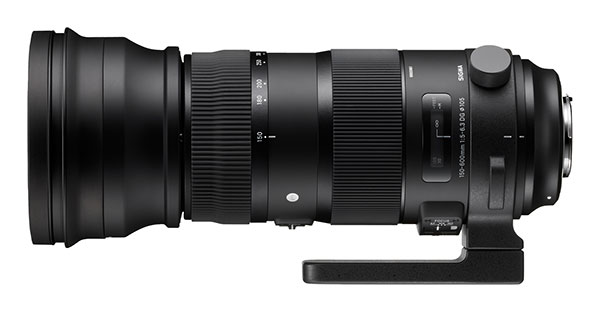
DE: And meanwhile, you have the MC-11 which [bridges the gap] as well. We'd discussed these two lenses before, but your 150-600mm f/5-6.3 you released in two versions, the Sport and Contemporary.
KY: Yeah.
DE: Is that something that we might see again other parts of your product line, where you have two versions [of a given lens], or was that a kind of unique situation?
KY: It's possible. For example, we can [potentially] make two versions of a 24-70mm f/2.8. Actually, in the case of the 150-600mm, there is not a significant difference in the performance between the Sports version and the Contemporary version. But in the case of the 24-70mm f/2.8, by sacrificing the quality a little bit, we can make a smaller, lighter version potentially. We don't have such a plan right now, but in the future, it's possible.
DE: I see. And looking at the macro lens lineup, the only recent additions have been zoom lenses, whereas the macro primes are older now. Is that a segment where you feel you're covered well enough by your current offerings, or is there room to come up with better Global Vision macros?
KY: For some reason, every time I have an interview, I have the same question for the macros. And you are right; currently we have the 105mm macro, 150mm macro and 180mm macro, three macro lenses. And [they're] quite excellent lenses but a bit old, so if [we] renew [these] lenses, the performance would be better than those [existing versions], so, in the future we will replace those macro lenses [with new designs].
DE: Yeah, and again it's a matter of schedule and everything.
KY: Yes, and priority.
DE: Yeah. I think maybe a lot of people like me remember the 70mm Macro, which was so spectacular, such an amazing lens. I know that one, they don't make the glass any more, so you couldn't continue it, but I think there are a lot of people that are very interested in macro. It's kind of like you can take pictures anywhere, you know? Even if it's a bad day outside, it doesn't matter, you can always find interesting subjects [for macro]. One of our editors was asking about tilt/shift lenses as being an interesting market.
KY: Mmmm!
DE: [Again, that's an area] where it is a big investment, a small payoff and manufacturers are already there. Nikon just released a new 19mm perspective-control lens and Canon has several options. Is there room for you to do something there that would be a differentiator? It's a small market, I would think, though.
KY: It's interesting, but it's our understanding that it's a very small market, so we'd like to make it, but naturally the priority is not very high.
DE: It's low-priority, yeah. It's something that you could apply Global Vision technology to, but my sense is that they're very, very specialized. You'd almost have to be doing just something like architectural photography really seriously, and so many people would just fix it in Photoshop.
KY: Yeah.
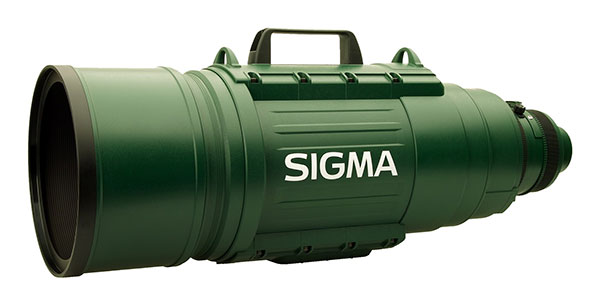
DE: You have the 200-500mm f/2.8 EX DG APO. It's fascinating not just for its immense size, but for the optical complexity and the staggering US$26,000 price. Can you shed any light on who has purchased that lens; what types of photographers or for what uses? Who buys those?
KY: Actually, the number of the sales is quite small. I know [of] one person who [uses it to] take a very long shot. He puts a lens on the hill on the coast, then he takes a picture of the surfers. [And another] photographer takes astrophotography pictures.
DE: Astrophotography, ah! So he uses it like a telescope, basically. Huh! I was wondering, does government buy any of those?
KY: Yeah, [relatively speaking] for this lens, we have lots of enquiries. Maybe they [want to] use for some defense [purposes].
DE: It's interesting, it's such a monster lens. How did you end up deciding to do that? You knew you weren't going to sell thousands of these. Was it just a statement, or it was fun, or... <laughs>
KY: It was my father's decision, so I don't know! <laughs>
DE: You don't know why he did it. <laughs>
KY: Everybody was wondering why we make such a big [lens], but my father seriously believed it's a little bit of a "brochure lens". [Ed. Note: Basically, it's an aspirational product which most users will never buy, but which shows what Sigma is capable of, and which can appear on the front of brochures as a reminder of the company's strengths.] My father truly believed we can sell good numbers, but I think we can't sell good numbers [for] that lens. But every time we put it on the show...
DE: It's PR, yeah, yeah.
KY: ...everybody looks at this, and talks about our lenses.
DE: Yeah, yeah. It was probably worth the cost of development just for that.
KY: Do you know the Japanese food called ebi furai? It's a deep-fried shrimp. It's like a tempura shrimp.
DE: Yeah.
KY: And the nickname of that lens in Japan is ebi furai, because it looks like a deep-fried [shrimp].
DE: <laughs> Oh, that's funny. I'll have to try that! Usually I like amaebi the best, but...
KY: Sashimi?
DE: Yeah, sashimi or nigiri.
KY: Oh, yeah!
DE: Yeah, I like that very much.
KY: If you have a chance to go to the Japanese seaside sushi restaurant from Kanazawa... It's on the other side of Japan, the Japan Sea side, not the Pacific Ocean.
DE: Oh, really? Yeah, yeah.
KY: In this area, they can catch the shrimp called a shiro ebi. It's really good! It's very sweet, so it tastes like an amaebi, but more sophisticated.
DE: Yeah, more sophisticated, more a deeper flavor. So it's still delicate, but deeper?
KY: Delicate, yeah. It's white shrimp, shiro ebi, but not so many sushi restaurants have it.
DE: You need to go to Kanazawa or something?
KY: Or you can find it in Tokyo. Some Kanazawa sushi restaurants in Kanazawa have branches in Tokyo.
DE: Ah. I can probably find it, that would be fun.
KY: Yeah, probably, yeah.
DE: So the last question is one from me about strategy and philosophy. I've been very impressed by the rate at which you keep producing so many amazing lenses. It's a very aggressive product development schedule, and I'm thinking that must be the result of a strategy that's different from manufacturers of other companies. My sense is that you must be allocating a larger percentage of your budget to R&D and development.
KY: Right.
DE: Because you're not as big as Canon or Nikon, but you come out with many more lenses, and nowadays, better lenses.
KY: Thank you! We need to do that. By introducing the new lenses, we can run the factory. As you know, we have a relatively big factory for the size of this company.
DE: Yeah, yeah.
KY: And the factory can produce very high-quality lenses. We don't need to rely on suppliers. That's the reason why we can supply the high-quality lens at the reasonable price.
DE: Mmm! Because you do so much manufacturing yourself...
KY: And also, in order to make high-quality lenses, the parts and components have to keep the very tight precision.
DE: Ah, yes.
KY: And first of all, it's not easy to find such a supplier. And even if we can find such supplier, the cost for our parts is quite expensive.
DE: ...made to that standard, yeah.
KY: Yeah. So making such parts in-house is the most cost-effective and easy [way] to control the quality. But that's the reason why we have the relatively big factory.
DE: Yeah. And you need to keep it busy now.
KY: Yes. Otherwise, this is a risk. If the factory runs slowly, then our profit will be reduced significantly.
DE: It drops very quickly, yeah. Interesting! And so that's what drives the rate of innovation, the decision to invest so much.
KY: Yes. We have to work hard!
DE: It's great, though! Boy, it's so cool the number of new products you have in the case out there. It's very impressive! Well that's really the end of the interview. Thank you so much for your time!
KY: Thank you.
